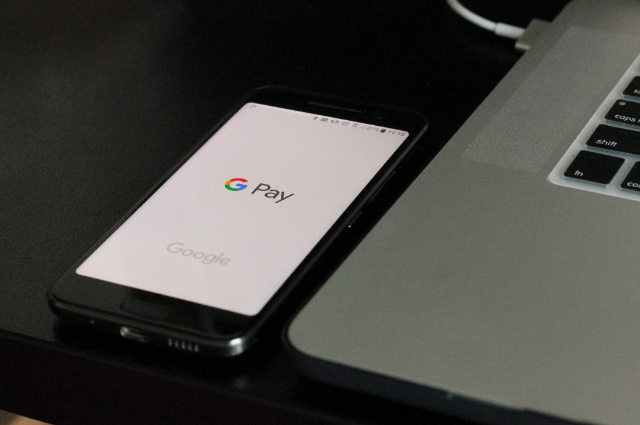
Photo by David Dvořáček on Unsplash
“Bhaiya aap esme scan karlo (Brother, scan here)”, is one of the few common liners we hear while purchasing something, opting for online payments, irrespective of the shop size and category. In an ecosystem where contactless payments have become more of a preference rather than an alternative, which got reflected more due to COVID-19’s shebang. A small, dashed, designed, square (profoundly called ‘QR Code’) has revolutionized the methods of payment – eliminating the factors of sufficient change, quality of currency-note, and payback options by sellers. All of these chains down to the Unified Payment Interface (UPI), which connected Pan-India/Global transactions by the virtue of digital methods.
While the junction for payments has enabled apt tracking system and quick balance check, initially it had its own set of listing for clearance before the ultimate sequence came into existence. With myriads of mergers, collaborations, and dogmas, the birth of UPI set a mark and target for making the country digitally dependent. The government of India, in the incumbent scenario, has been promoting citizens to opt for online payments, reducing the number of cashless transactions as it accounts for a major reason for financial fraud, theft, and a ‘thing’ to carry apart from other belongings.
The flagship method for economic inclusion has increased the bandwagon of payments in terms of daily usage and allowed subsequent facilities to be availed by users (based on their spending patterns). Started in 2016 by RBI to be orchestrated by the National Payments Corporation of India (NPCI), the government run entity initially faced severe turmoil in terms of operational imposition and onboarding the set of vendors/sellers/users targeting as a method for everyday usage. Moreover, back then, online payment was still in its budding phase and hasn’t been opted for by a major percentage of the Indian population or even smartphone users in the case.
In the current demographics, where almost a billion transactions are taking place, the banks have kept their respective limits for the number of transaction amounts per day as well as a token for payments. This was made to ensure the individual doesn’t overspend due to its functionalities as well as measures the net impact from its connected accounts. Apart from this, its international-run has been on-track – specifically with neighboring countries like Nepal and Bangladesh, the advent of UPI has cajoled the users to treat this as the safe and only method of payment. Although, there are certain sections within our country where digitalization is yet to be developed.
While the growth and usage of UPI modes can be debated, a parallel incubation of ‘Digital Currency’ has been on-plate next for RBI. To be used similar to hard-cash, the central bank digital currency (CBDC) has incurred the virtual currency for streamlining cross-borders payments, which, in today’s context, requires tireless track time and multiple payment gateways. From UPI’s perspective, it attempts to lessen the load of the transaction, especially for small amounts and loads which unnecessarily take up the per-day limit from the respective banks. In addition, a report by Oliver Wyman and JP Morgan claims that, in the postulation of digital currency, the $100 Bn global market for online payments would become handier in terms of regular/frequent usage.
As India is gearing up ahead of the G-20 summit, the recent tie-up between India’s UPI and Singapore’s Paynow has become the talk of the town since it has allowed the easy and instant transfer of amounts across borders – thereby cutting the additional charges. Not just this, it also led to further connections and plausible collaboration from different continents. This initiative has bolstered India’s estimation/target of achieving a $10 trillion online payments industry by 2026(as per a report from PhonePay and BCG). Not just this, UPI has knowingly/unknowingly fostered the E-commerce domain in India, with cashless payments to vendors as the only option available and increasing the channel by 74.1% in 2023.

Photo by Matthew Kwong on Unsplash
As we hear enough anecdotes about India strengthening its digital aspect and making sure that the entire country gets benefits from a same level of the network, the issue of the internet is still debatable with respect to many tier II/III cities. And, this further coils to the enrollment of ‘payment-failed’ making the involved parties distressed. In either case, the number of scams through online payments is significantly higher than any other country, as people tend to share their OTP and passcodes over fraud calls which ultimately dilutes further usage of UPI. The banks have been tracking its minute sources of faults (server down), and attempts to furbish the user experience in the upcoming time.
A recent survey with 1bridge claimed that ~ 3-7% accounts for digital transactions in the village. However, a quarter of net residents aren’t aware of UPI payments, while the remaining are adamant to use it given its interface and fright of losing money online. Here, India witnesses a contrasting scenario of digitalization – while its stakeholders are exerting unfaltering commitments towards creating an ecosystem for digital India from education to monetary to healthcare and more; it’s unable to address the very essence of ‘educating’ its usage and additional benefits. To some, the process of linking their bank account(s) seemed void due to less balance or a zilch number of transactions taking place on a day-to-day basis.
On the other hand, the queue for installing QR codes in shops has been more tumultuous than the market itself. PhonePe, BharatPe, and Gpay are some of the leading ‘scanners’; the attractiveness and profit margin of the same have allowed E-commerce giants like Amazon Pay to play in this market as well – where it had allowed facilities apart from traditional shopping as well. The very motive behind building a capsulated environment is to capture a maximum audience and build an inclusive circle for everyday payments. Based on such pilot models, many developed and developing countries have been replicating India’s UPI model as an apt payment-processing channel in their respective countries. Bhutan and Singapore have been already running such models; modified based on their population and usage genre.
UPI’s governing body, NPCI, has laid an interchange fee for its usual transactions which would be applicable to its prepaid payment instruments like Paytm towards its merchants. While the Peer to Peer (P2P) and Peer Peer Merchant (P2PM) would be free. For the initial one, the fee would range from 0.5% to 1.1% based on the merchant category for amounts accounting for more than Rs. 2000. Many financial experts have pen downed myriads of possibilities with respect to the postulation of multiple payment portals and companies building different customer experience to chunk-in maximum loyalty for long-term perspective. However, the fee might appear a major reason for people to browse and select an apt server/host based on their findings.
The previous year, UPI came up with its LITE version – allowing small-scale lightning payments for multiple times. The primary portal for a transaction is Paytm, wherein the users can opt for paying online via their ‘online wallet’ instead of the linked bank account, which lowers the traffic usage with the respective banks. As of now, the per day amount limit is Rs.4000, and as per research, approx. 50% of the daily transactions happen for amount less than Rs.200, and the LITE model doesn’t hold any per-day cap for usage. The overall division between the LITE and the normal model allows individuals to balance their payment routines more precisely.
However, across portals, the factor of non-recurring payments has been addressed by merchants as it upholds a single debt to receive the payment. RBI, on the other hand, has compressed the issue and channelized the BBPS service to furbish both, recurring and non-recurring payments. Moreover, the initiation of Single-Block and Multiple Debts for the UPI payments have been in talks to segment the credit limits, thereby making the option most apt and convenient, and appealing for the upcoming period.
References
- Das, V. (2022, December 7). How RBI's new UPI mandate will enhance payment functionality? mint. Retrieved March 30, 2023, from https://www.livemint.com
- Tomorrowmakers. (n.d.). Latest changes in digital payments. NPCI allows nris from 10 countries to use UPI payments in India. Tomorrowmakers. Retrieved March 30, 2023, from https://www.tomorrowmakers.com
- India Today. (2023, February 24). UPI Lite launched: What is it and how to setup and use it? India Today. Retrieved March 30, 2023, from https://www.indiatoday.in
- Ians. (2022, April 11). Very few people in rural India use UPI for payments: Report. News18. Retrieved March 30, 2023, from https://www.news18.com
- Banks and service providers need to raise capacity to keep pace with UPI. The Economic Times. (n.d.). Retrieved March 30, 2023, from https://economictimes.indiatimes.com
- Says:, K., says:, L. S., & says:, E. R. (2023, March 21). Top 10 advantages and disadvantages of online payments. NTT Data Payment Services India. Retrieved March 30, 2023, from https://www.nttdatapay.com
